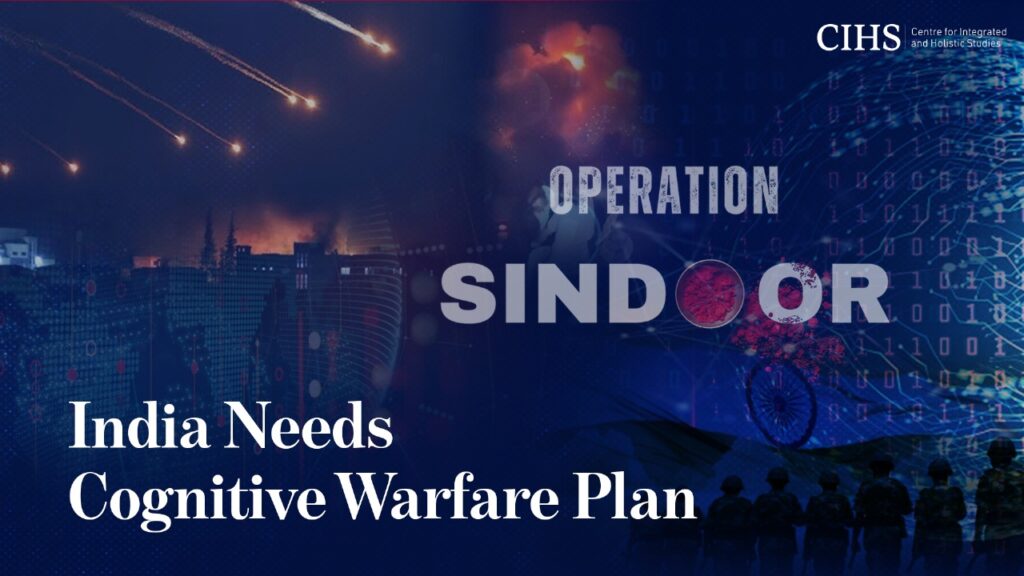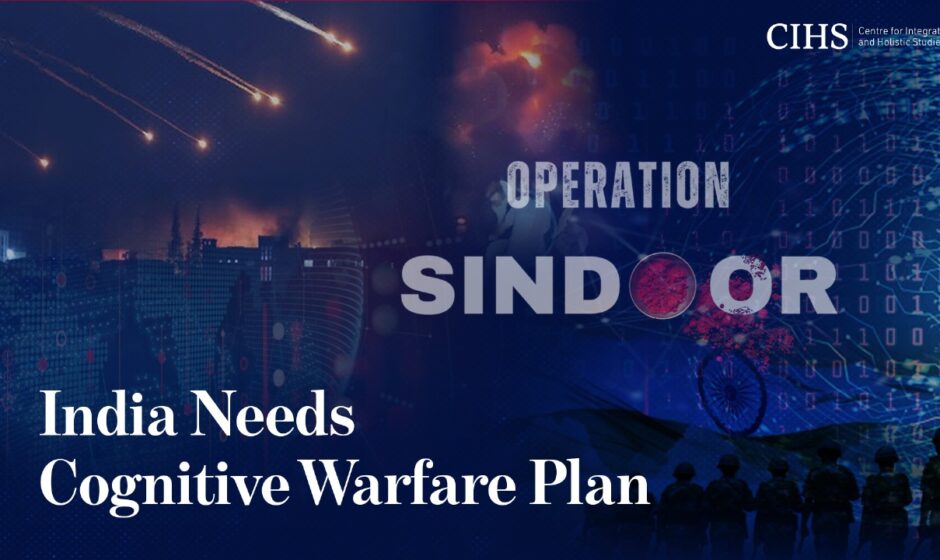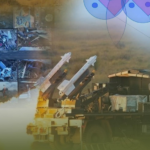Fighting enemy on information highway as on ground emerges a big challenge and opportunity for Bharat that’s declared war on terror.
Rohan Giri
In the wake of Operation Sindoor, India’s precision strike against cross-border terrorist camps in Pakistan, a disturbing counteroffensive has emerged—not on the battlefield, but in the information domain. The recent statement by Communist Party of India (Marxist–Leninist)—disguised as a call for peace—reveals a deeper, coordinated attempt to delegitimize India’s national security concerns. On the parallel, certain social media influencers and public figures have echoed narratives that align more with Islamabad’s propaganda machinery than with India’s democratic discourse.

Convergence of disinformation, ideological proxies and cognitive warfare by deftly manipulating freedom of speech calls for deep dive analysis.
Cross-Border Strikes to Cognitive Warzones
Operation Sindoor was launched in response to brutal killing of 26 Indian civilians by Pakistan-backed jihadi groups in Pahalgam. Indian Armed Forces counter-terror operation—based on actionable intelligence— neutralised multiple terror hideouts along Line of Control (LoC) and deep into Pakistan.
Even before the word was out on the operation, a parallel battlefront opened in the digital sphere. Assorted Left extremists who have lost the plot and support of people re-grouped under CPI(ML) had the gumption to cynically talk about “war mongering,” “mock drills,” and “jingoism” instead of outright condemnation of terrorists, their backers and handlers.
Deliberate attempt has been made by CPI-ML to shift focus away from campaign against terror, victims of terror to a narrative of false equivalence placing India’s defensive response and Pakistan’s terrorism on same plane.
This is not an isolated political position. It is an ideological posture with global resonance—amplified by social media handlers, YouTubers, and creators whose content is now being routinely picked up by Pakistani media to discredit India’s war against terror.
Cultural Expression as Cover for Subversion
For instance, Neha Singh Rathore, a content creator and folk performer came under legal scrutiny for provocative posts that allegedly promote communal disharmony. Rathore’s content—strategically laced with satire and emotion—has been widely shared across borders, especially in Pakistani outlets eager to highlight India’s “internal repression.”
While art and dissent is at core of democracies like Bharat, Rathore’s content is not organically critical, instead ideologically consistent with Pakistan’s strategic communication goals. The timing, targeting and terminology in such digital content reflect more than personal opinion—they indicate agenda-setting behaviour.
CPI(ML) and figures like Rathore are not merely engaging in protest; they are building parallel narratives that erode legitimacy of India’s campaign against terror. When these narratives go viral, they serve the psychological warfare strategies of hostile powers.
Beijing in 1962 to Islamabad Today
Maoist and marxist gangs have a long history of siding with foreign adversaries. During 1962 Sino-Indian War, segments of CPI openly supported China dismissing Indian territorial claims and branding national mobilization as bourgeois nationalism. Today, the same ideological model has evolved, more sophisticated, digitally native and far more dangerous.
By refusing to condemn cross-border terrorism and attacking India’s right to respond, CPI(ML)’s latest statement resurrects this playbook. It leverages democratic tolerance to inject disinformation, exploit communal sensitivities and erode confidence of Indian populace in its institutions.
The party’s warning against “war preparations” and “state violence” is couched in humanitarian concern but functionally serves to paralyze India’s right to strategic deterrence. This is not peace activism—it is information sabotage.
Legal and Civic Clarity
India’s commitment to free speech under Article 19 of Constitution remains robust. This freedom is not absolute. The new Bharatiya Nyaya Sanhita (BNS) Section 152 replacing the colonial-era sedition law, rightly targets acts that threaten unity and integrity of nation including narrative warfare.
In the digital era, narrative disruptors have become as strategically valuable to the enemy as traditional insurgents. Unlike overt enemies, these actors often present themselves as poets, comedians, journalists or social reformers. Their strength lies in ambiguity, their power in virality.
Perception Wars and Legitimacy Battle
International opinion is increasingly shaped by perception rather than policy. In this context, India’s counter-terror narratives must compete not only with traditional media but with decentralized content ecosystems that are vulnerable to infiltration, manipulation and illegal funding.
When disinformation aligns with an adversary’s diplomatic strategy i.e., portraying India as an aggressor and the region as unstable, it not only undermines counterterrorism efforts but damages India’s geopolitical credibility in multilateral forums.
Suspension of Indus Waters Treaty (IWT) following Pahalgam Terror attack was a bold diplomatic move, signaling a shift in India’s engagement with Pakistan. But without narrative control, such moves risk being framed globally as escalatory rather than defensive.
Strategic Culture of Narrative Resilience
India needs more than military readiness; it requires a strategic communication plan that integrates law, policy and narrative discipline. This includes:
- Institutional counter-disinformation mechanisms that trace and expose narrative sabotage.
- Digital hygiene education that trains citizens to recognize ideological manipulation.
- Legal deterrence against agenda-driven misinformation that seeks to divide India internally while benefiting external actors.
CPI(ML) statement and online activism that follows it are not expressions of dissent—they are symptoms of a deeper vulnerability: India’s tolerance for internal ideological actors who camouflage sedition as satire.
As India rises on the world stage, its battles will increasingly be fought in the cognitive domain. Winning them will require legal, civic, and strategic clarity.
(Author is a doctoral fellow at Amity University in Gwalior, content head at Centre for Integrated and Holistic Studies)



